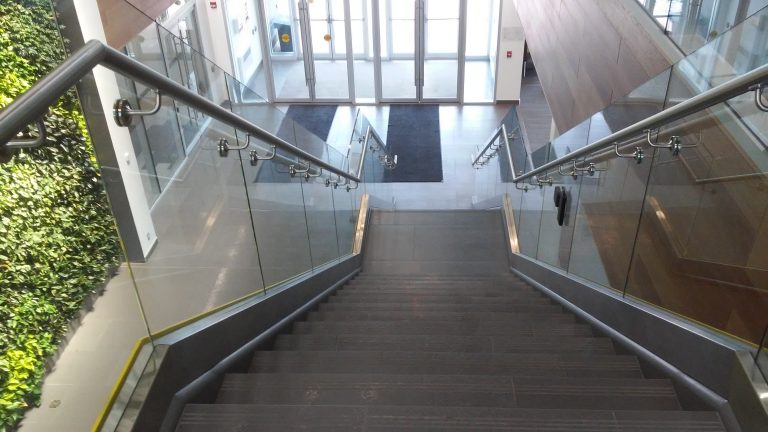Note on panel captions: All captions that you see on the panels are based on participant reflections from the study itself, and have been de-identified and approved for sharing publicly in this exhibit by participants. Bolded text in the panel captions was done by the researchers, to draw attention to key components of participants’ reflections.
Photovoice Study | Investigating human factors in the evolv1 green office building
Culture of Sustainability
What does a culture of sustainability mean for citizens of the building?
A ‘culture of sustainability’ (COS) was described as being comprised of multiple elements, which together can create a more effective, long-term sustainable culture in the building. This includes some level of interest and commitment to sustainability by individuals who make up the broader culture, demonstrated through individual sustainable actions (e.g. the decision to bike or take public transit to the building, or participate in sustainability initiatives). Beyond the individual, a COS was seen to be shaped by intentional community-building for collective action on sustainability, including the sense of ‘coming together’, collaboration and sharing by multiple people and organizations in service of sustainability (e.g. the focus of the evolvGREEN hub). Lastly, citizens recognized the need for a supportive, healthy environmental context to help enable and facilitate a COS to emerge – and that evolv1 itself, tenant organizations, and building / organizational management (among others) can all play a role in empowering building citizens to both envision and pursue sustainability actions.

Theme 1: Individual interest and commitment to sustainability
Some level of interest and commitment to sustainability is needed by individuals to build a culture of sustainability
“Hey look, there’s a bike there, people cycle to this, it’s an interesting place to arrive to!”
“There should be an appetite to learn more about sustainability, thinking ‘how can I translate some of these things that I learn from this building into other aspects of my life?’”
“This is a building that has synergy with a connected world and our choices, you know, our use of garbage, running the tap longer, not turning off the tap, simple things like cleaning up after ourselves – all of those choices have an effect on the rest of the world. It’s really up to the people – do we clean up? I mean this is a hard task.”
Theme 2: Community-building for collective action on sustainability with shared purposes
A culture of sustainability does require attention to community-building for taking collective action with shared purposes, enabling advancing sustainability in particular areas.
“I know it’s just a picture of the four partners but I think that’s also really important, that something like evolvGREEN exists in the building and that all these people have agreed to come together under one umbrella. It ties into that community piece that we’re all in this together, and we work better when we’re all together on something like this.”
“If only one person is trying to be sustainable, it’s not going to have a lot of impact. It’s only impactful when everybody is doing it. Having a workplace like evolv1 makes everybody think about sustainability a little bit more than usual.”
“Collaboration and sharing is so important for building a culture of sustainability, so good interactions between people is very important. The culture has to be one where we’re acting together as a community.”



Theme 3: An empowering, healthy and enabling environmental context
A culture of sustainability both requires, benefits from, and helps create a broader environmental context that is empowering, healthy and enables participants to pursue sustainability actions.
“The central stairs help you make the sustainable choice to walk instead – they definitely impact behaviour and practices.”
“There’s care for the wellbeing of people and also care for our environment and sustainability. If we all work together, there’s probably a lot more that the building and people could do that would be empowering for everybody. If you see something that could be improved, let’s talk about it and how you can contribute and what the actual impacts are. Let’s talk!”
